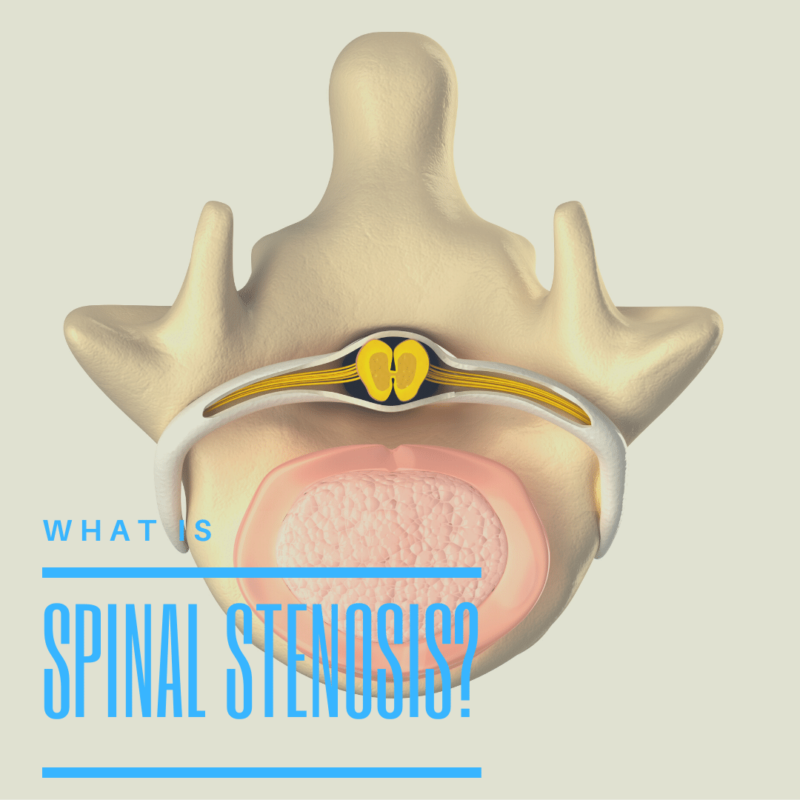Back pain can be caused by a number of things, from poor posture to an injury. But did you know that back pain can also be the result of a medical condition called spinal stenosis? Spinal stenosis is a degenerative condition that affects the spine, and it can cause a variety of symptoms, including back pain, sciatica, and leg pain. In this blog post, we will discuss everything you need to know about spinal stenosis: its symptoms, causes, risk factors, how it is diagnosed and treated. Stay tuned!
What is spinal stenosis?
Spinal stenosis is a degenerative condition of the spine that occurs when the spaces in the spine narrow, putting pressure on the spinal cord and nerves. This condition can occur anywhere along the spine, but it is most common in the lower back and neck. There are two types of spinal stenosis: foraminal stenosis and central canal stenosis.
- Foraminal stenosis occurs when the foramen, which are the openings between the vertebrae through which nerves pass, narrow. This puts pressure on the nerves and can cause pain, numbness, or weakness in the extremities.
- Central canal stenosis occurs when the central canal, which is the space in the spine that contains the spinal cord, narrows. This puts pressure on the spinal cord and can cause pain, numbness, or weakness in the extremities.
What are the symptoms of spinal stenosis?
The symptoms of spinal stenosis can vary depending on where along the spine the condition is present. In general, however, the symptoms of spinal stenosis include back pain, leg pain, numbness, tingling, and weakness. Pain associated with spinal stenosis can be a dull ache, electric-like pain that radiates, or even a pins-and-needles sensation. In some cases, weakness and numbness can occur even without pain. The symptoms of spinal stenosis typically worsen with activity and are relieved by rest.

What are the causes of spinal stenosis?
Spinal stenosis can be caused by a number of things, including age-related wear and tear, herniated discs, bone spurs, and tumors. Herniated discs, bone spurs, and even thickening ligaments all affect the width of the spinal canal and can cause it to narrow, compressing the spinal nerves. In some cases, the cause of spinal stenosis is unknown.
What are the risk factors for spinal stenosis?
The risk factors for spinal stenosis include age, family history, obesity, and a sedentary lifestyle. People with certain medical conditions, such as diabetes or rheumatoid arthritis, are also at increased risk for developing spinal stenosis.
How is spinal stenosis diagnosed?
Spinal stenosis is typically diagnosed through a combination of a physical examination, imaging tests, and nerve function tests. Your doctor will likely start with a physical examination, during which they will ask about your symptoms and medical history. They will also perform a neurological examination to check for signs of nerve damage. Imaging tests, such as X-rays, MRI scans, and CT scans, can also be used to diagnose spinal stenosis. Nerve function tests may also be ordered in some cases.
How is spinal stenosis treated?
The treatment for spinal stenosis depends on the severity of the condition. In some cases, nonsurgical treatments, such as pain medication, physical therapy, and steroid injections, may be enough to relieve symptoms. In other cases, surgery may be necessary to relieve pressure on the spinal cord or nerves. If you think you may have spinal stenosis, be sure to see a spine specialist for an evaluation.
In Conclusion
In this blog post, we discussed everything you need to know about spinal stenosis: its symptoms, causes, risk factors, and how it is diagnosed and treated. We hope this information was helpful! If you think you may have spinal stenosis, be sure to see a spine specialist for an evaluation. Thanks for reading!











 in CA by O360®
in CA by O360®